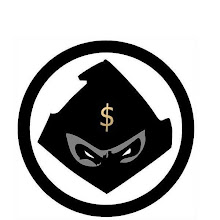
 Equities all over the globe have recovered nicely. It is almost as if the August credit crunch never happened. But are things really that good?
Equities all over the globe have recovered nicely. It is almost as if the August credit crunch never happened. But are things really that good?Inter bank rates in the US, UK and other countries, some as remote as Russia, are just now spiking or have remained elevated.
Borrowing Costs Soar; Banks Seek Loans Amid Squeeze (Update1): “The cost of borrowing pounds, dollars, and euros rose as banks sought funding over the quarter- end amid a credit squeeze that shows no signs of abating.
The London interbank offered rate that banks charge each other for overnight loans in pounds rose 20 basis points to 6 percent today, according to the British Bankers' Association. The corresponding rate for dollars rose 21 basis points to 5.30 percent, and the euro rate climbed 6 basis points to 4.23 percent.”
Some of the riskiest borrowers are left with no alternative but to head straight for the punitive discount window.
“Northern Rock borrowed a further 5 billion pounds ($10 billion) from the Bank of England, bringing the total it owes to the central bank near to 8 billion pounds, the FT said. Northern Rock fell as much as 5.4 percent today, while the value of U.K. home loan providers Bradford & Bingley Plc and Alliance & Leicester Plc, which also raise financing in money markets, declined.”
Russian Liquidity Trouble Starts To Boil: ““There could be some defaults. The Russian rouble bond market is not working.”
Overnight lending rates in Russia climbed to 10 per cent, the highest since mid-2005, even after the central bank on Wednesday pumped an additional $2.56bn into the banking system via two one-day repo auctions. Traders and bankers said the spike came as companies and banks prepared to make a monthly round of tax payments and primed their accounts to meet central bank requirements in time for end of third quarter financial reports.”
While the credit crunch may have kicked off in the US and spread to Europe, believing it has stopped there is over simplifying the matter. This is a GLOBAL credit bubble.
Canadian Commercial Paper Investors Seek Extension (Update3): “Banks and investors seeking to restructure about C$35 billion ($35 billion) of Canadian asset- backed commercial paper said they need more time to come to an agreement.
“I'm going to damn well do everything I can to have a solution before year-end,” Purdy Crawford, a Toronto-based lawyer who chairs the investor committee, said today on a conference call. “What we're trying to do is avoid a meltdown, which would not be in the interest of any of the investors.””
That is pretty serious indeed. Some of the very real and practical consequences of a credit crunch are revealed in my post the other day A Big Deal when essential supplies such as food and drilling equipment almost didn’t make it to remote mines in Canada’s north.
“The market for Canadian commercial paper has been roiled after Coventree Inc. and other non-bank funds failed to roll over most of their maturing debt in mid-August because investors feared possible ties to subprime mortgages. Banks refused to provide back up financing, effectively shutting the market, prompting 10 banks and money managers to propose conversions into longer-term debt by mid-October.”
Things aren’t getting any better either. In fact one could argue that the opposite as authorities increase their interventions.
“In an effort to ease the credit crunch, the Bank of Canada made C$985 million in one-day securities purchases today, the first such move in six weeks.”
U.S. Commercial Paper Drop Slows After Fed Cuts Rates (Update5): “The decline in the U.S. commercial paper market slowed last week, after the Federal Reserve cut interest rates to shore up confidence in the credit markets.
Debt maturing in 270 days or less fell by $13.6 billion in the period ended yesterday to a seasonally adjusted $1.86 trillion, including a $17.3 billion decline in asset-backed commercial paper, according to the Federal Reserve in Washington.
The amount outstanding has fallen by $368.1 billion, or 17 percent, over seven straight weeks to the lowest since August 2006 as some issuers were shut out of the market. The decline is smaller than the previous week's drop of $48.1 billion, a sign that the credit crunch in short-term debt markets may be subsiding following the Fed's half-percentage-point reduction in its benchmark rate on Sept. 18.”
The commercial paper market is not deteriorating as fast as it was in August, but it IS deteriorating… and not just a little bit.
Greenspan Says Risk of U.S. Recession Has Increased (Update3): “Former Federal Reserve Chairman Alan Greenspan said the odds on the first U.S. recession in six years have increased as falling house prices threaten consumer spending.
“The danger of recession has obviously risen,” said Greenspan, who will meet U.K. Prime Minister Gordon Brown in London this weekend, in an interview on BBC Radio 4 today. Greenspan said the chance of recession was “less than 50-50,” repeating a comment made Sept. 23.”
Really? Less than 50/50. What kind of economic shit storm is required for the odds to be higher than 50/50? The simultaneous collapse of a global credit and asset price bubble isn’t enough to get the odds over 50/50?
U.S. August Personal Spending Rises Greater-Than-Forecast 0.6%: “Consumer spending in the U.S. rose more than forecast in August, a sign the fallout from a weaker job market and collapse in subprime lending had yet to reach the biggest part of the economy.
The 0.6 percent rise in spending was the biggest in four months and followed a 0.4 percent increase in July, the Commerce Department said today in Washington. The Federal Reserve's preferred measure of inflation cooled.”
Numbers like this don’t point to a recession… but then again, what if they’re just lagging? I mean look at yesterday’s new home sales numbers. Calculated Risk cleanly presents all the data and to say its scary is an understatement.









0 comments:
Post a Comment